Yesterday the Chief Propagandist of the country, Barrack Hussein Obama, provided Americans with an example of his wisdom and long-term thinking. He declared that he would unleash his rabid dogs at the Department of Justice to root out the oil speculators responsible for the increase in gas prices. Funny how he hasn’t unleashed these rabid dogs on criminal Wall Street banks. His blustering and misinformation campaign will further destroy any chance of steering this ship away from the iceberg that is peak oil. He will convince the ignorant masses that the reason oil continues to rise in price is because of BIG OIL and the dreaded SPECULATORS. Maybe he should unleash his rabid dogs on the Federal Reserve Building. Ben Bernanke is responsible for $20 of the increase.
If you want a real discussion and analysis of why prices are rising and will continue to rise over the long term, you need to go to websites that actually use facts and where people think. There is no better site than http://www.theoildrum.com/ for solid data and facts about peak oil.
Below is an article that addresses why we are in deep deep shit when it comes to oil. Once it requires you to expend more energy than you acquire from obtaining a new energy resource, the gig is up. To put it bluntly: when it takes 1.1 barrels of oil to obtain 1.0 barrels of oil, then we’re fucked. That is the dilemma of the developed world. As this article points out, it will be far worse for the U.S. than China or India because we have a vast infrastructure to maintain.
I find it fascinating that M. King Hubbert, who predicted peak oil, was actually very optimistic about the world shifting from oil to nuclear in time to keep the world growing. Sadly, he overestimated the intelligence of politicians and the American people. We haven’t built a nuclear power plant since the 1970s and now we are going to pay a high price. The recent disaster in Japan means that the American public will not support any major effort to replace oil with nuclear.
Obama and the fools in Congress can bluster and lie and hold hearings until they are blue in the face. It is just a show. The world supply of oil has peaked. We are now on the downward slope. Take a look at the consumption charts for China and India. Anyone who doesn’t think there will be a war for oil in the near future just isn’t thinking.
Will the decline in world oil supply be fast or slow?
Posted by Gail the Actuary on April 18, 2011 – 11:15am
Topic: Demand/Consumption
Tags: hubbert’s curve, peak oil [list all tags]
An Oil Drum reader wrote, asking the following question:
Dear Oil Drum Editors,
I have been reading quite a bit about peak oil recently. I get the impression (not based on data) that at some point there will be a quite steep decline in oil production/supply, and therefore we will see dramatic changes in how the world runs. However, when I look at oil depletion rates and oil production declines based on the Hubbert Curve, it seems to suggest a rather smooth decline. How is that some people expect a serious energy crunch in about two or three years, then?
Many thanks! –Curious Reader
Below the fold is my answer to him.
Dear Curious,
It seems to me that
(1) A slow decline assumes that the only issue is geological decline in oil supply, and the economy and everything else can go on as usual. Technological advances and switches to alternatives might also be expected to help keep supply up.
(2) A fast decline can be expected if one or more adverse factors make oil supply decline faster than geological factors would suggest. These might include:
(a) Liebig’s Law of the Minimum – some necessary element for production, such as political stability, or adequate food for the population, or adequate financial stability, is missing or
(b) Declining Energy Return on Energy Invested (EROEI) interferes with the functioning of society, so the society generates too little net energy, and economic problems ensue, or
(c) Oil becomes so high priced that there is little demand for it. This would quite likely be related to declining EROEI.
My view is that some version of the faster decline scenario is likely, because we will hit limits that interfere with oil production or oil demand.
Let me explain my reasoning.
Declining EROEI
EROEI means Energy Returned on Energy Invested. It can be defined as the ratio of the amount of usable energy acquired from a particular energy resource to the amount of energy expended to obtain that energy resource. Wikipedia says,
When the EROEI of a resource is equal to or lower than 1, that energy source becomes an “energy sink”, and can no longer be used as a primary source of energy.
The situation is really worse than Wikipedia suggests. An economy needs a certain level of energy just to keep its infrastructure (roads, bridges, schools, medical system, etc.) repaired and working, and citizens educated. So energy resources, to really be useful, need an EROEI significantly higher than 1 to maintain the system at its current level of functioning.
How much higher than 1.0 the EROEI needs to be on average will depend on the economy. An economy such as that of China, with relatively fewer paved roads and less expensive schools and healthcare system can probably get along with a much average lower EROEI (perhaps 4.0?) than an economy like the United States (perhaps 8.0), because of lesser infrastructure demands.
If the average EROEI available to society is falling because oil is becoming more and more difficult to extract, an economy with a high standard of living such as the US would seem likely to be affected before an economy with a lower standard of living, such as China or India or Bangladesh, because of the higher EROEI needs of the more extensive infrastructure. Ultimately, though, the world is one economy, so problems in one country are likely to affect the economies of other countries as well.
There a couple of issues related to declining EROEI:
1. High cost to extract. Sources of oil or natural gas or coal that are difficult (high cost) to extract tend to be lower in EROEI than sources that are low cost to extract. So high cost of extraction tends to be a marker for low EROEI. We are increasingly running into this issue, for both oil and natural gas.
2. Declining Net Energy. EROEI is closely related to “Net Energy,” which is the amount of usable energy that is left after deducting the energy that it takes to make energy. When net energy decreases, we have less energy to run society, making it difficult to do things like maintain bridges and roads, and fund schools.
So high cost of oil extraction, low net energy, and low EROEI are all very closely related.
What did M. King Hubbert Say?
M. King Hubbert in various papers such as these (1956, 1962, 1976) talked about a world in which other fuels took over, long before fossil fuels encountered problems with short supply.
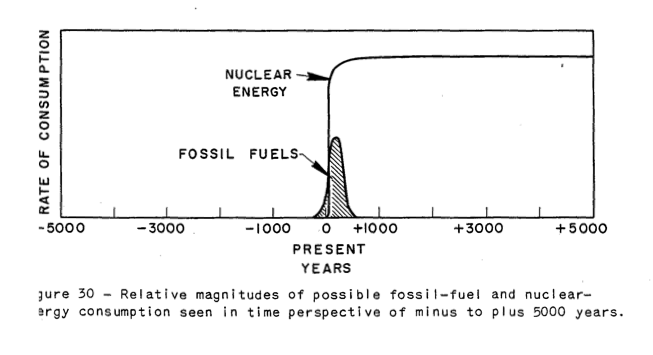
Figure 1. Image from Hubbert’s 1956 paper, Nuclear Energy and the Fossil Fuels
In such a world, there would be plenty of net energy from alternative fuels to run society. Because of this, even if fossil fuels ran low, it would be easy to maintain the economy’s infrastructure, without disruption. In Hubbert’s 1962 paper, Energy Resources – A Report to the Committee on Natural Resources, Hubbert writes about the possibility of having so much cheap energy that it would be possible to essentially reverse combustion–combine lots of energy, plus carbon dioxide and water, to produce new types of fuel plus water. If we could do this, we could solve many of the world’s problems–fix our high CO2 levels, produce lots of fuel for our current vehicles, and even desalinate water, without fossil fuels.
He also showed this figure in his 1956 paper:
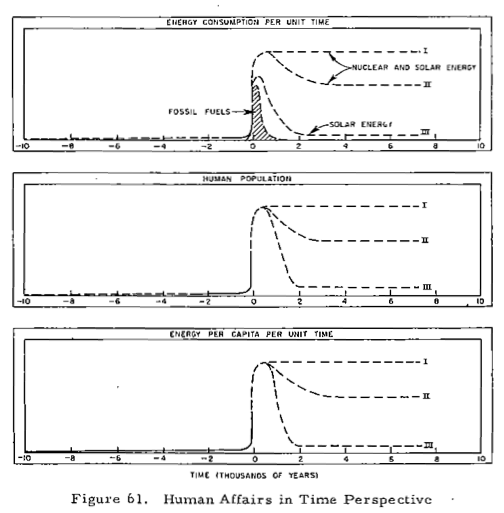
Figure 2. Image from Hubbert’s 1956 paper, Nuclear Energy and the Fossil Fuels
In this figure, most of the additional energy comes from nuclear energy, while a smaller amount comes from “solar” energy. By solar energy, Hubbert would seem to mean solar, wind, tidal, wood, biofuels, and other energy we get on a day-to-day basis, indirectly from the sun. His figure seems to suggest that solar energy would basically act as a fossil fuel extender, and would not last beyond the time fossil fuels last. The primary long-term source of energy would be nuclear.
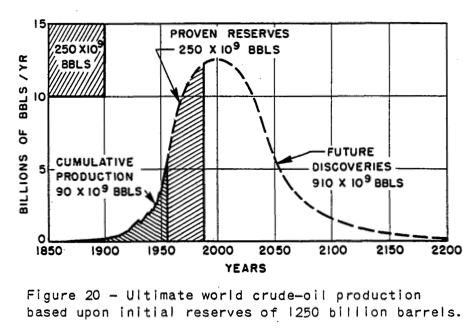
Figure 3. Hubbert’s application of his curve to world oil supply, from his 1956 paper.
In such a world, applying Hubbert’s Curve to world oil supply would make perfect sense, because there would be plenty of other energy, to provide the energy needed to keep up the infrastructure needed to main extraction of oil, gas, and other fuels as long as they were available. Even liquid fuels and pollution wouldn’t be a problem, if they could be manufactured synthetically. The carrying capacity of the world for food would eventually be a factor, but in one scenario in his 1976 paper, he shows the possibility of world population eventually reaching 15 billion people, thanks to the availability of other fuels.
Another Approach to Forecasting Future Oil Supply: Limits to Growth Type Modeling
Another approach estimating the shape of the decline curve is by applying modeling techniques, such as used in the 1972 book Limits to Growth by Donella Meadows et al. The factors considered in this model were population, food per capita, industrial output, pollution, and resources. Resources were modeled in total, not oil separately from other types of resources. There were 24 scenarios run. The base scenario suggested that the world would start hitting resource limits about now (plus or minus 10 or 20 years). There have been several analyses regarding how this model is faring, and the conclusion seems to be that it is more or less on track. This is a link to such an analysis by Charles Hall and John Day.
With this type of model, according to Limits to Growth (p. 142), “The basic mode of the world system is exponential growth of population and capital, followed by collapse.” This type of decline would seem to be substantially faster than the decline predicted by the Hubbert Curve.
One thing I notice about the Limits to Growth model is that it leaves out our debt-based financial system. Since so much capital is borrowed in today’s world, it seems like including such a variable would tend to make the system even more “brittle”, and perhaps move up the date when collapse occurs.
Also, the Limits to Growth model is for the world as a whole, rather than for different parts of the world. Different areas of the world can be expected to be affected differently, as oil gets in shorter supply. The effect of this would seem to be to push economies which have a higher need for oil (illustrated above with my estimate that the US requires a EROEI of 8.0 on energy resources) down toward economies that use smaller amounts of oil (illustrated by my rough guess that perhaps China could get by with an EROEI of 4.0), especially if they trade with each other. I explain how I see this happening in a later section of this post.
Demand for Oil (or other Fossil Fuels)
Even if there is plenty of high-priced oil extracted from the ground, if potential buyers cannot afford it, there can be a problem, leading to a decline in oil production. Demand can be thought of as the willingness and ability to purchase oil products. Many people would like to have gasoline for their cars, but if they are unemployed, or have a part-time minimum wage job, they are likely not to have enough money to buy very much.
Over the long term, declining demand can be expected because of declining EROEI, as illustrated by Prof. Charles Hall’s “Cheese Slicer” model.

Figure 4. Professor Charles Hall’s cheese slicer model of the economy, reflecting the energy needed to make energy, and other aspects of the economy at 1970

Figure 5. Professor Charles Hall’s cheese slicer model of the economy, reflecting the energy needed to make energy, and other aspects of the economy at 2030
Declining demand, and ultimately lack of sufficient demand to support supply, is related to the much larger size of the big black “energy needed to create energy” arrow as resources become more and more difficult to extract, and the much smaller size of the red discretionary spending arrows. When the discretionary spending arrows are small, people can’t afford the oil that is produced.
Lack of Demand Can Be Expected to Affect the More-Developed World before the Less-Developed World
Let me explain one way I see lack of demand for oil arising in the developed world today. This is related to the tendency of economies with high required EROEI to maintain infrastructure to be the first economies to be affected by declining EROEI, and by the tendency of free trade to lead to equalization among economies.
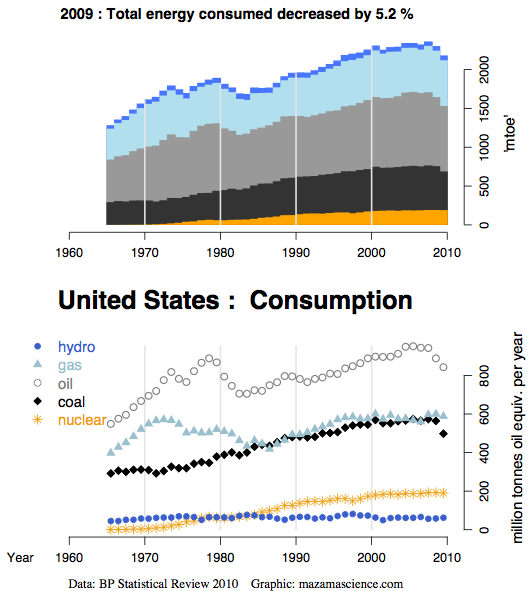
Figure 6. US energy consumption, from Energy Export Data Browser
US energy consumption in general, and oil consumption in particular, has been relatively flat in the 2000-2009 period, and declining at the end of that period, indicating low demand. Prior to this period, it was rising.
More or less the reverse has happened in China and India. Growth in oil use and energy products in general was moderate prior to 2000, but increased rapidly after 2000.
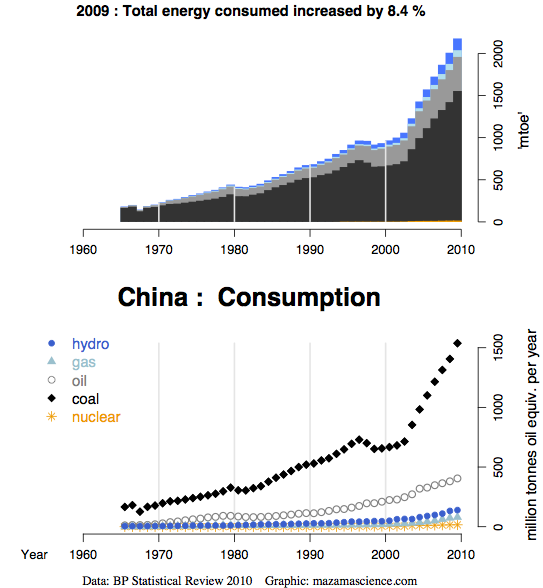
Figure 7. China’s energy consumption, from Energy Export Data Browser
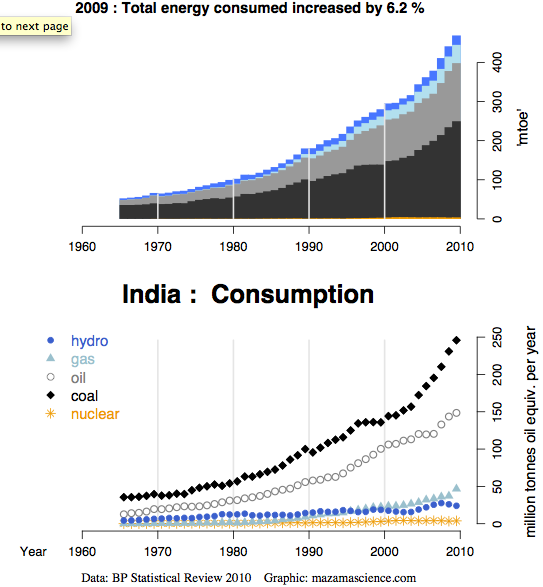
Figure 8. India’s energy consumption, from Energy Export Data Browser
When we look at the percentage of the US population that is employed (Figure 9), it has been decreasing since 2000, so there are fewer people earning wages, and thus able to buy oil and other products. Prior to 2000, the percentage of the US population working was increasing.
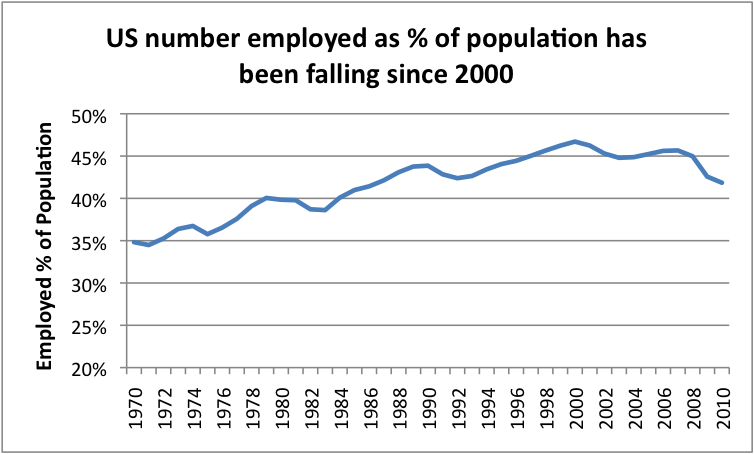
Figure 9. Percentage of US population with jobs has been falling since 2000, based on Bureau of Labor Statistics Data.
In fact, over time, in the US, there is a high correlation between number of people employed and amount of oil consumed.
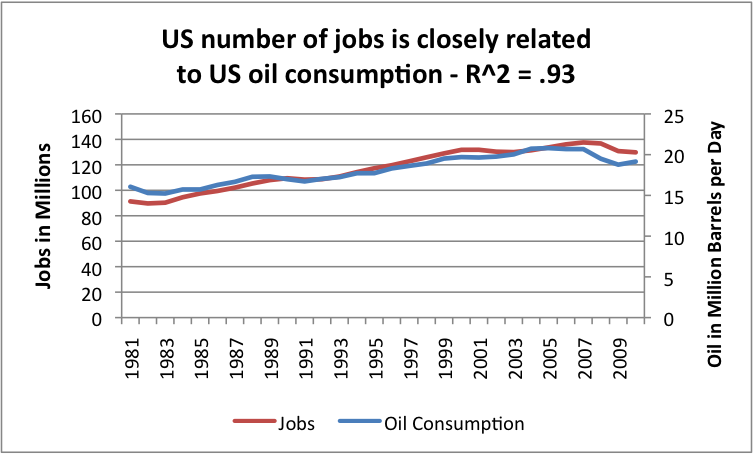
Figure 10. Comparison of number of jobs (BLS) with oil product supplied (EIA)
This high correlation is not surprising for two reasons: (1) jobs very often involve often use oil in producing or shipping goods, and because (2) people who are earning a salary can afford to buy goods and services that use oil.
If we think about it, businesses employing people in China and India have three cost advantages over businesses employing people in the US:
1. People in China and India earn less, in large part because their life styles use less oil. As the price of oil has rises, a person would expect this difference to become greater, if salaries of US earners are raised over time, to reflect the higher cost of oil, as it rises. If the living standards in China increase, the salary differential could decline, but still might be very high in dollar terms.
2. The cost of electricity used in manufacturing in China and India is cheaper, because it is generally coal-based. The cost of electricity from coal is quite likely even cheaper than electricity from coal from the United States, because these countries are more likely to have poor pollution controls, and because the coal is extracted using cheap labor. The difference in the cost of electricity can be expected to become greater, to the extent the US imposes stricter pollution regulations, or switches to higher priced alternative power (say, offshore wind), or imposes a carbon tax.
3. Taxes and employee benefits are likely to be lower (in absolute dollars, but perhaps as a percentage as well) in China or India, because infrastructure is less complex, and because there is less in the way benefits comparable to Social Security, Medicare, etc. (This is related to the lower EROEI required to maintain the infrastructure in these countries.)
With these advantages, as trade restrictions are eased and more “free” trade of services is enabled through the Internet, I would expect an increasing number of jobs to move overseas, and more goods and services to be imported. Salaries will also tend to stay lower in the US, especially for jobs associated to goods and services that can be produced more cheaply in China or India.
With these lower salaries in the US, demand for oil in the US will tend to be lower, because people who are paid less (or out of work) will not be able to afford high-priced oil for vacations and other optional purchases. As more US jobs move overseas, unemployment and recession can be expected to increasingly become problems. Furthermore, it will become difficult to collect enough taxes from the lower number of employed people to pay enough taxes to keep the system operating. I write about this in What’s Behind the US’ Budget Problems?
One thing that happens, too, with this arrangement is that world’s coal use has risen.
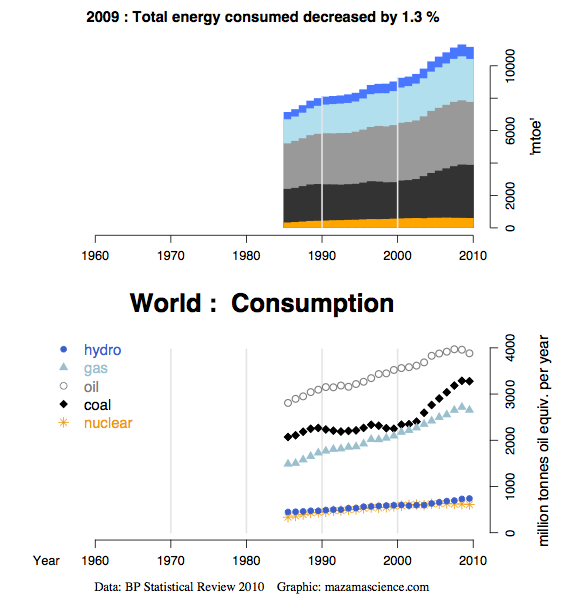
Figure 11. World energy consumption, from Energy Export Data Browser
I wonder if all of the emphasis on CO2 reduction has not exacerbated the problem. Countries that reduce their own coal use and instead rely more on imports can feel virtuous, but they also set the stage for negative impacts. By using less coal, these countries leave more coal for lesser developed countries to import. These lesser developed countries probably burn it less safely (for example, with less mercury controls) and compete with them for jobs. The developed countries can be expected to have more and more budget problems, as their tax bases erode, and the number of unemployed rises.
When new electricity generation is planned in the United States, the usual practice is to compare expected costs with other types of new electricity generation that might be possible in the United States. It seems to me that this practice does not show the full picture. Goods and services produced in the United States will have to compete with goods and services produced around the world. Some of the electricity used will be from nuclear plants that have long been paid off; some will be from coal production; and a little will be from high priced new types of electricity production. As long as there are no tariffs or other trade restrictions, higher-priced US electricity will tend to hinder exports and help imports. I would vote for trade restrictions.
Conclusion
The downslope of oil production can be expected to reflect a combination of different impacts. Unless technology improvements truly have a huge impact, it would seem to me that the overall direction of the downslope is likely to be faster than Hubbert’s Curve would predict.
Thanks for writing!
Best Regards,
Gail Tverberg (also known as Gail the Actuary)




Thursday, April 21, 2011 2:45 PM
Team Obama Targets Oil Traders and Speculators; Scapegoating 101
Instead of investigating fraud and corruption at banks, and instead of questioning the Fed’s policy of US dollar debasement, and instead of pondering the role his administration’s budget deficits have on the price of commodities, Team Obama Targets Oil Traders and Speculators.
President Barack Obama said on Thursday the U.S. attorney general was assembling a team to root out any fraud and manipulation in the oil markets that might be contributing to higher U.S. gasoline prices.
“The truth is, there’s no silver bullet that can bring down gas prices right away,” Obama said in prepared remarks for his opening statement at a townhall-style meeting in Nevada.
“The Attorney General’s putting together a team whose job it will be to root out any cases of fraud or manipulation in the oil markets that might affect gas prices – and that includes the role of traders and speculators. We are going to make sure that no one is taking advantage of the American people for their own short-term gain,” Obama said.
Scapegoating 101
The first rule in scapegoating, of which president Obama is a renown grand-master, is to quickly point the finger at someone else before everyone figures out where the finger should be pointed.
Bear in mind that traders and speculators probably are pushing the price of oil higher. I cannot quantify “how much” but open interest in commodity futures by speculators is at or near peak levels. Moreover, hedge funds and pension plans have plowed into commodity ETFs. These actions have an upward, yet unquantifiable effect on price.
The root cause of this mess however, is massive, perpetual, and ever-increasing budget deficits in conjunction with the Fed’s explicit policy of US dollar debasement.
As a result of those forces, it is perfectly natural for traders and speculators to bet against the dollar and on hard assets like gold, silver, and oil, even though the trade may become overly one-sided, as it is right now.
Thus if Obama wants to point a finger, he should point a finger at himself, at Congress, and at the Fed, not at traders and speculators.
Mike “Mish” Shedlock
http://globaleconomicanalysis.blogspot.com
Insightful, refreshing description of our predicament from a different perspective.
We’re still fucked six ways from Sunday, but it’s a nice read to make me think about one of the myriad other ways of getting fucked… Speaking of getting fucked… Maybe Bernanke bought the giant dildo and has it on his desk right now like the lamp from A Christmas Story?
If you think nuclear power is or was the way to go, then you have not been paying attention and worse, you expect way too much of people.
Why would the nuclear industry be any different than Wall Street? In fact they’re closely connected. Bankers love massive nuclear projects. And the nuclear industry loves massive banks. And CEOs of utilities and nuclear industry companies are as criminally greedy as Jamie Dimon and Lloyd Bank-fiend.
And the regulators at the NRC? You think they’re any different or more effective (on behalf of the general public) than the SEC or the DOJ?
Wake the fuck up dude. Seriously. Being pro-nuke before 3/11/11 was seriously lame. Being pro-nuke after 3/11/11 is absolutely insane.
Conscious
“bankers love massive nuclear projects.”
That might be the stupidest fucking statement made on TBP yet. You are a dumbass squared.
There hasn’t been a fucking nuclear power plant built in 32 years you fuckwad. You must be some greenie douchebag. I bet you plan on filling up your SUV with sunshine like your beloved President promises.
Let me guess. You think ethanol is a brilliant idea?
Now it begins.
First step blame speculators. – Won’t make a difference
Second step nationalize the oil companies. – Gov will drop gas prices, consumption will go up, we soon run into shortages, Gov institutes rationing, and things just get worse.
Third step we go to war and take the oil that we can’t live without.
And So I Goes.
Conscious
Good thing Admin got to you before I did. I would not have been nearly as kind and gentle.
Your lack of knowledge of the nuclear industry shines through. Bacause of increasing demand, by the year 2030, the U.S. will need to build power plants that produce about 340,000 megawatts MORE than what is produced today, which is a smidgen over 1,000,000 megawatts.
What energy source would you recommend to meet that increased demand? Wind? Well, one of those bird-blenders, which cost an average of $3 million each and produce power only 25-40% of the time even in windy west Texas, produces 1 whole megawatt when it’s running at peak efficiency. Where do you propose we put 340,000 bird-blenders which produce power only 25-40% of the time?
Solar? The largest solar plant in the U.S. produces 360 megawatts of power, except when it gets dark, which it does every day. Power production is backed up by a natural gas plant when the sun sets, which, to my limited experience here on earth, it does every day. The solar plant is located on 6,000 acres (!!!!!) of desert. That’s just shy of 10 fucking square miles.
Coal? Yeah, right. They just BLEW UP a Navajo-owned coal plant in Nevada. Natural gas? Excellent possibilities there, but natural gas plants usually don’t produce vast quantities of power. We’re gonna need a smash of them to meet the increased demand, as in about 800-1,000. The NIMBY factor says it can’t be done by 2030.
Which leaves us with nuclear. One, just one, Westinghouse Advanced Passive 1000 reactor, produces 1,154 megawatts of power. Alabama, Florida, South Carolina, and Georgia are all building dual-reactor plants using the AP 1000. All of the reactors, save one, will be co-located with currently operating nuke plants.
The plant manager of the largest power plant in the U.S., the triple-reactor (3,900 megawatts) Palo Verde plant in Arizona, just stated that there is sufficent room at the Palo Verde complex to hold two more reactor buildings. Currently, Palo Verde’s customer base is 4,000,000 stretching from California to Texas. With 2 more reactors, it will jump to 6,000,000.
Financing for nuclear power could partially come from the federal and state governments. Obama has already committed $8 billion to new nuclear power plants. While I don’t particularly care for federal involvement, it’s a helluva lot better than the TBTF banks on Wall Street.
Now, you were saying?
Administrator,
Not only do I have an SUV, I have a Hummer and not only that, it’s a stretch Hummer. And not only that, I have a fleet of them. And not only that, I had them converted so that they are FlexFuel ready. Because I DO love Ethanol because it makes poor people worldwide starve, especially those dirty brown illegal people from the south who take ALL of our jobs, especially the really good ones! Plus anything that has an EROEI of less than 1 is pure gold in my book. And anything that sucks the Ogallala aquifer dry as a side benefit is a good thing.
And I love me some Obama. I certainly do! My favorite thing about him is how seamlessly he managed the transition from Bush to himself. Except for that Nobel Peace prize (it’s not fair that Bush didn’t get one too) and the color of his skin and the fact that he speaks well, you can’t tell the difference between the old boss and the new boss.
I think that’s fucking awesome.
As for banks financing nuclear power – you are right, actual free market economics have kept most of them away from nuclear for the past 32 years. It definitely wasn’t hypocritical, greenie, ethanol loving, politically inactive and uninformed, suburban, middle class whitey sheeple like me that stopped ’em!
But the banks are working to change those unfortunate economics. They’re working to make sure the tax payer assumes ALL of the risk. If they get that through (and thanks to complete fucking morons like you, they may still have a chance), then they’ll be happy to lend money endlessly while we make sure it’s endlessly profitable for them – come hell or high water (or both as the case may be, though in the other order works better).
This minor little Fukushima thing and the fact that 53 plants in the US have the same ingenious design (spent fuel pools above the reactor) but with 5 times as much spent fuel as even the Japanese have, is just a little hiccup. The BP “spill” didn’t slow offshore drilling down much at all. If the two troops of entertainers in DC are able to carry out the will of their masters, we won’t see much slowdown in the nuclear renaissance either.
Keep pushing for nuclear so that more people can more quickly realize how fucking stupid you are!
Conscious
“Free market economics has kept them away from nuclear for 32 years”
Just when I think you’ve said the stupidest fucking thing in the history of TBP, you go and prove me wrong by saying something even stupider. Do you even have two brain cells to rub together? I think a shit eating monkey would be more coherent in their argument.
The Federal government has made the building of nuclear plants impossible due to their rules, regulations, hurdles and 10 year approval process. I’m sure you are in favor of more government regulation because you think they know best.
Only a mongoloid non-thinking shithead would blame banks for peak oil and the fact that the US hasn’t had an energy policy in the 30 years since the Dept of Energy was created to reduce our dependence on foreign oil.
I’m sure you can’t top the pure idiocy of your last post, but I’m sure you’ll try.
SSS – I think it’s a great strategy to place as many nuclear plants into a small area as possible. That way if something goes wrong with one of them and then two and then three and then four and then five and then six, you only have to go to one place to deal with it.
That’s really cool! Granted problems from one might cause problems at another that otherwise would have been fine, but it’s worth it in the end right?
And think how much space we save by putting spent fuel pools above the reactor vessel. Outstanding design.
Thank God for nuclear power. I just wish we had more of it. And more waste too.
Definitely the problem is that there’s not ENOUGH of it.
SSS – we aren’t going to need another terawatt of electricity in 2030. That’s just another projection based on indefinite growth at assumed rates. Real world doesn’t work that way. I think we should all be happy if, in 2030, the US has just as much reliable electric capacity as it does today in 2011. That alone will be a significant challenge, requiring serious immediate investment.
Conscious – Here do some reading on nuclear:
http://market-ticker.org/akcs-www?singlepost=2491667
you can’t change the past but you can the future.
Conscious
All right, then. I see you have consolidated your place on this site as the Village Idiot. There are 104 nuclear plants in this country, scattered all over. What’s up with the stupid consolidation bullshit and the Chicken Little spent fuel rods bullshit? If it’s so fucking unsafe, why hasn’t there been a hue and cry? I’ll tell you why, because it’s all bullshit.
You make no counterproposals for energy. None. Fucking windbag.
Persnickety
What’s up with the terawatt (1 trillion watts) comment? Did I say anything about terawatts?
And what if you’re dead wrong about how much additional power the country will need by 2030 (the figure I gave of 340,000 megawatts comes from the Energy Information Agency)? If you’re wrong, California blackouts and brownouts, here we come. Do you have a better figure for power needed and projected growth rate? I’m all ears.
[img [/img]
[/img]
RE
SSS: you originally said:
“by the year 2030, the U.S. will need to build power plants that produce about 340,000 megawatts MORE than what is produced today, which is a smidgen over 1,000,000 megawatts.”
So, I slightly misread…. you are saying 1 terawatt total (1 trillion watts or 1 million megawatts), requiring new capacity of 340 gigawatts. OK, off by a factor of three. Anyway, I don’t see us needing or being able to get that much power for two separate reasons:
1) If we manage to keep advancing technologically, our power consumption per capita should continue going down as efficiency improves – insulation, lighting, power distribution, computing, etc.
2) Absent a nuclear breakthrough, which is just about our only hope, there isn’t going to be any combination of fossil fuels and uranium-based reactors that’s going to let us increase our power production and consumption by that order of magnitude. I suppose a mysterious virus could wipe out everyone else on earth while leaving all the oil and coal infrastructure intact, but that seems improbable. I’m sure you know peak oil. Coal is also facing a peak, although it’s less clear as to timing and gets a lot less attention. Much like oil, as coal reserves decline the quality of the produced fuel declines rapidly, so there may be large quantities of nominal “coal” but it’s not the same stuff we burn today, much less the far better anthracite we burned a few generations ago.
[img [/img]
[/img]
RE
Persnickety
Thanks for the clarification on your terawatt comment.
We can’t wait for a “breakthough” on nuclear energy, whatever that means. The AP 1000 is a third-generation plus plant that has been assessed by the NRC as 20 times safer as the first generation plants. 20 times. And modular in design. And NRC approved regardless of where its built, with caveats of course.
Your coal comments may need further research. There is a ginormous coal plant on the Navajo reservation in northeastern Arizona…….2,200 megawatts. Nearby there is a ginormous, very low-sulphur coal deposit which feeds the plant. Estimated shelf life of the mine: 200 years. Oh, the power plant is the largest employer of Navajo Indians in the state.
We need to leave at least one positive legacy for our future generations. Nuclear energy is one of the best avenues available.
(Un)Conscious
Nice duck and run. Nothing like a Village Idiot who throws unsubstantiated darts and disappears. Coward.
[img [/img]
[/img]
RE
@RE: You are getting boring.
MA
@MA
I am driving home a point. Stuff it.
RE
SSS: I’m not concerned about safety with uranium based nuclear plants – I’m well aware that there are dozens of modern designs that are very safe. The simple problem is that the standard uranium fuel cycle is horribly inefficient and there isn’t enough uranium to run lots of plants on that cycle for a long period of time. Efficiency could be improved somewhat with fast breeders, more still with thorium salt designs. A viable thorium sale reactor, widely adopted while we still are able to make the necessary components, could be a sufficient breakthrough. And it could really happen; technically the odds seem to be in the 80-90% range, maybe even better. Politically and commercially is a whole different ballgame. Willingness to adopt and rely on advanced nuclear reactors could be what finally sinks the US and truly gives some BRIC dominance.
As for coal, I don’t care if the Navajo plant will be operating for a while. It’s just one plant. Yes, I know there are a handful (two? three?) other western coal plants that are two miles from the mine feeding them. Yippee. Throughout most of the US and the world the coal plants are near their markets and the mines are where the resource exists. That resource is being depleted and getting inferior as we deplete it. Germany is basically burning lignite for their fuel – crap that was rejected by farmers and better off peasants 100-200 years ago. Incredibly dirty stuff. Coal’s future is as nasty as the mines or the (pre-scrubber) exhaust. A future based on coal is Mad Max with black lung.
That way if something goes wrong with one of them and then two and then three and then four and then five and then six, you only have to go to one place to deal with it. -Conscious
Yanno, I think that it would be better to scatter them out so if one blew up it couldnt become a chain reaction.
Persnickety
You said, “there isn’t enough uranium to run lots of plants on that cycle for a long period of time.”
Uh, no. Back in the 70s, in the heyday of nuclear plant construction, the USGS declared that we would run out of uranium ore by 1980. A few years later, the assessment was changed to 2030. Now, it is “we have enough to last us for the next century.”
Do we have a “Make up your fucking mind!” moment here? I’m guessing yes.
That is some heavy shit. I have been having a peak oil debate with a friend of mine. He’s kind of a Fox News Republican in some ways, poor bastard listens to the Larry Kudlow radio show for economy shit. He is convinced we have plenty of oil and Obama and those fucking Democrats just won’t let us drill, that “there is plenty of oil”.
This will set him strait.
SSS, your comments on nuclear energy are killer. What does the AP 1000 use for fuel? Do we have it in our own backyard, so to speak? I also think building brand new fancy nuke plants next to existing oldy moldy first generation plants is fucking stupid. If a problem is going to occur it is most likely to happen to an older plant, wouldn’t you think? And in Japan, Karl Deninnger, while not freaking out, has noted that usable or repairable facilities will never be used again because they are inside a death zone.
[img [img]
[img] [/img]
[/img]
[img
RE
[img [/img]
[/img]
RE
[img [/img]
[/img]
RE
Solar Power Satellites.
We mine the moon (more titanium ore than Earth) and use that along with silicon (also in abundance on the moon) to build a network of a thousand or so satellites in low earth orbit beaming power back to earth via microwaves. Then we get really smart about how we use energy, stop wasting so much and the picture changes. We save oil for the important stuff like fertilizer and pharma.
Do the research. Try to find something wrong with this plan.
The cost of the Iraq war would have got it underway.
Glad to see newbies are still being welcomed with open arms.
By the way Admin – we are overusing the term “stupidest comment ever” (me included). . I still think Stuck made that one when he comapred reading RE’s articles to a college education. I know he retracted it, but still, that is hard to beat. Whwere is the jolly green giant anyway?
English Rose comes close every time she posts but that is to be expected.
.
Punk
Nuke plants use uranium ore, which we have plenty of in the U.S. And much more in Canada and Australia, both of which are huge countries (as in the size of the U.S.) with small populations and willing to mine and sell natural resources to a willing buyer.
We don’t HAVE to build new reactors “next to” older plants, but it makes sense to do so on an economy of scale. Many U.S. nuclear sites are huge. Palo Verde in Arizona is 4,000 acres. Do the math. That’s over 6 square miles, which means the new nuke plant could be as far away as 8-9 miles from the old nuke plant. Gives new meaning to the term “next to,” doesn’t it? If you live and travel in the western U.S., you understand the term “miles and miles of nothing but miles and miles.” This is a BIG fucking country.
Japan, which is about the size of Montana, fucked up big time by building the Fukushima site near the ocean AND an earthquake zone. Fukushima got hit by a 36-foot tsunami and had an 18-foot tsunami wall to protect the site. Ooops. Missed it by 18 feet.
RE
Give it a rest. You’re a sterile male shooting blanks.
Of course Stuck retracted his post. Reading my posts is BETTER than a College Education.
TOP TEN REASONS RE’S POSTS ARE BETTER THAN A COLLEGE EDUCATION
#1 It’s FREE unless you decide to buy something off Jim’s Amazon Ads.
#2 I’m funnier than any College Professor
#3 I don’t get paid to teach dumb ass theories like Keynesianism
#4 I am CERTIFIED by Muckabout as the SMARTEST contributor to this website 🙂
#5 No Education Loans necessary from the Banksters
#6 I post great graphics and cool vids
#7 Even if you don’t agree with my posts, they do make you THINK
#8 You can’t find theories like mine ANYWHERE else 🙂
#9 No Grades, it’s Pass/Fail
#10 I’ll never send you any annoying Alumni Association requests for donations or ask you to attend any reunions
RE
Smith-n-Jones
Do you have dyslexia?
My nuclear proposal can be started now and completed by TWO-ZERO-THREE-ZERO.
Your Buck Rodgers bullshit can be started by TWO-THREE-ZERO-ZERO.
@SSS
“Nuke plants use uranium ore, which we have plenty of in the U.S. And much more in Canada and Australia, both of which are huge countries (as in the size of the U.S.) with small populations and willing to mine and sell natural resources to a willing buyer.”
The entire world known reserve of uranium is not enough to power all existing and planned nuke plants. Check out this general statement of fact.
Now dig down a bit and things get complicated – who has how much and who wants how much. Russia is OK – they can produce all the uranium they need for a long time – power plants and weapons. Canada and Australia produce far more than they need. China has not nearly enough to power their existing planned plants. China has signed supply deal (with the strength of treaty) with Australia but that’s not enough. Canada can export enough to handle US but only if new plants do not double existing ones. China is courting Canada as a strategic source and Canada wants to diversify. India wants to build up their nuke power but does not have the fuel – so they are courting Canada for supply. Canada wants to tied a fuel deal with India buying the Canadian power plant design. Indeed, the fuel is Canada trump card.
The problems with nuclear are a) very expensive and getting ever more expensive due to cost of construction and refurbishment, b) uranium supply put severe limits on expansion, and gets complicated geo-politically, c) disposal of spent fuel getting to be a huge problem.
The French does not have any of these 3 problem even though they are 3/4 dependent on nuke power. They use a different design that create more fuel as power is produced. Why did the US reject such design? China is doing their own research to develop their version of French design to address the fuel problem. This should tell us something.
Yes, nuclear is essential, but it is not utopian. In fact it is the most messy politically.
SSS
That’s a good point, regarding the size of the plants, as well as “big sky country”.
My brother inlaw tells me breeder reactors are the shit. That they are like, 90% efficient (or something) compared to the older generation models that are like 4% efficient (or something). Those numbers are shit, I know, but you get my point.
Does the AP 1000 use breeding technology? Could it be set up to do it?
I know I could just google the damn thing but I have no bullshit meter for nuclear power. I wouldn’t know if the info I found was any good at all. I trust you to give it to me strait.
Saudi Arabia made contracts with China for nuclear energy start-ups.
With what will the saudis pay the chinese?!?
Where Colma Rising learned to wind surf and kyack in Jr. High:
[img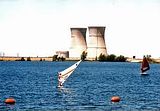 ?t=1303574733[/img]
?t=1303574733[/img]
Rancho Seco Lake, south of Sacramento
Apollo
The geological experts keep moving the goal line on uranium ore supply. Back in the 70s, when there was a frenzy on building nuclear power plants, the experts said we will run out of uranium in 1980. A few years later, it was 2030. I just read a 2009 article a few weeks ago, from the USGS but I may be wrong, that we have enough uranium ore to last “for the next century.” Shit, I don’t know what to believe regarding the supply of uranium. I do know there are huge untapped deposits in the western U.S., but the friggin environmentalists keep the mining companies wrapped around the axle with their bullshit challenges to getting at the ore. Our country is being held hostage by these bastards, however well meaning they may be.
Punk
I’m not well read on the various designs of nuclear power plants. The AP 1000 is a pressurized water reactor that uses fissionable nuclear material. It is not a fusion reactor, and I don’t know whether it can be converted to a fusion reactor, but I don’t think so. The big pluses to the AP 1000 are its design features which maximize safety and its ability to produce a massive quantity of power. It’s modular design will enable it to be built in 3 years!! That’s fast. It uses 85% LESS piping that a first generation reactor. The less piping, the less chance of Murphy’s Law kicking in. Stuff like that. If something goes really wrong on any of its design features, like a coolant pump failure, the plant WILL automatically shut down without any operator input AND without any need for AC power. The lack of AC power from backup generators is what created the Fukushima disaster. The AP 1000 is a winner, in my view. China has ordered 12, btw.
@SSS
Actual uranium reserve is by and large state secrets. Even in the US. US has pretty good production but so much of it has been used by the military to build up the Cold War nukes. So that what’s left is simply not enough to take care of the future. So here we are again – US does not have oil, gas and uranium self-sufficiency *today*. This freaking country mindset is short-term gain for long-term pain.
US nuke plant designs have always gone for pressurized water. I am no reactor expert to explain and we know this is a very complicated subject. But it is simple to understand that when you put highly pressurized water around a couple of tons of refined fuel – and this fuel stores the entire amount of energy the reactor will ever produce – we are talking extreme danger if things go bad.
As proven in Japan, even when the reactor shut down properly after the quake, the fuel will continue to produce low level of heat energy literally for years because a 100% shut down is not possible. If this energy is not dissipated – because the cooling pumps have been knocked out – we get what we now see. The heat (about 1 megawatt/hr) builds up, melt materials and caused hydrogen explosion. And eventually will melt the entire core, destroying the plant. This is the nature of boiling water design.
In short, boiling water design is not inherently safe. It operates on positive-feedback which must be managed using advanced engineering.
In contrast, the Canadian design does not use highly pressurized water. It uses heavy water circulating under low pressure. If anything goes wrong, heavy water will flow into the core under natural gravity and stop the reaction entirely. In fact, they have a huge tank of heavy water stored at the top of the confinement building so that, as a last drastic step, the entire reactor building will be flooded with heavy water which stops everything dead. A core melt is impossible. The design is inherently safe because it uses negative feedback. Something I am sure the Japanese now appreciate with the lost of an entire 6-reactor plant.
Apollo
You said of the Canadian reactor, “In fact, they have a huge tank of heavy water stored at the top of the confinement building so that, as a last drastic step, the entire reactor building will be flooded with heavy water which stops everything dead. A core melt is impossible. The design is inherently safe because it uses negative feedback.”
That’s exactly my understanding of how the AP 1000 works in the event of a drastic design failure. There’s a huge tank of water ABOVE the reactor. The valves holding the water back failsafe to the open position should certain events occur and gravity feeds the water (don’t know what type of water) to flood the reactor. No power needed to do that.
Btw, if we can use all those decommissioned Russian nukes for nuclear fuel, why couldn’t we do the same thing with our own decommissioned weapons? After all, we are headed in the right direction in drawing down, finally, our nuclear stockpiles.
I have this idea that with time efficient programs timing programs we could induce a magnetic field, in a series connection, so as we not rotate an armature in a field [energy intensive] but the movement of the field would be across an “armature” thru electrically stimulated means to simulate armature motion.
“In fact, they have a huge tank of heavy water stored at the top of the confinement building so that, as a last drastic step, the entire reactor building will be flooded with heavy water which stops everything dead. A core melt is impossible. The design is inherently safe because it uses negative feedback.”
I have read where it was the backup emergency generator failed [water pumps for cooling inop] that led to the overheat condition but I do think a heavy water failsafe, removed from the grid, is a good idea.
@SSS
The traveling wave nuclear reactor, a project invested by Bill Gates, show promise. It burns using spent nuclear fuel, which the US alone has some 100,000 tones, and therefore will last centuries without new fuel. Automatically solved the spent fuel problem too. See:
http://gigaom.com/cleantech/terrapower-how-the-travelling-wave-nuclear-reactor-works/
But traveling wave is brand new physics and technology. It take a great deal of wisdom, expertise and money to make it practical, not to mention politics and time. But if US can do it, this is one giant step technological and societal for mankind, not to mention the financial benefit of selling this to the world. Do we now regret wasting so much money for Wall Street shit while begging for money to finance new reactor design?
Apollo
Thanks for the link on traveling wave reactors. Very impressive. I hope we can pull it off. It would benefit our country, and the planet, greatly. This energy project would be have been well worth a considerable investment by the federal government. Alas, Cash for Clunkers was deemed more important.